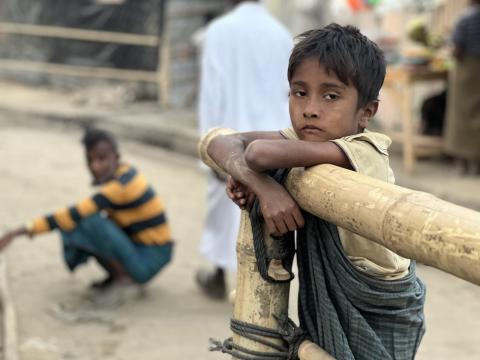When US Secretary of State John Kerry visited Moscow in March, looming over his meeting with Russian President Vladimir Putin in the Kremlin was a statue of Russian Emperor Alexander II (1855-81). Known as the ‘Tsar-Liberator’, Alexander freed the serfs, introduced trial by jury, relaxed press censorship and created elected regional assemblies that might, but for his assassination, have laid the foundation for bolder constitutional experiments.
But isn’t Alexander the wrong autocrat? Russia, we are told, is in the grip of Stalin-mania. Over the past 12 months, The New York Times, The New Statesman, The Independent and Foreign Policy have reported on an unspoken Kremlin policy to rehabilitate the Soviet tyrant.
Dubbed ‘re-Stalinisation’, its alleged aim is to return Russia to the fear and suspicion that characterised life until Stalin’s death in 1953 and to secure what are asserted as having ever been Putin’s twin goals: the consolidation of absolute personal power and restoration of the Soviet Union (or something like it) in Eastern Europe.
Appearing to support such dark tidings, a survey from the Levada Center (an independent polling organisation) earlier this year showed a significant rise during Putin’s presidency in the number of Russians who believe Stalin’s time in power ‘brought with it more good than bad’, from 26% in 1999 to 40% in 2016.
Also serving as evidence of a Kremlin-directed revival of the Stalin cult and, by extension, of Putin’s own Stalin-esque ambitions is a handful of recent provincial monuments raised in Stalin’s honour, mostly at the initiative of the opposition Russian Communist Party. Others fault the Kremlin’s failure to suppress the popular use of Stalin's image during last year’s 70th anniversary celebrations of Soviet victory in the Second World War.
But does the evidence really support the phenomenon such commentators believe they see? [fold]
Not according to Mikhail Remizov, director of the National Strategy Institute.
‘It is absolutely not the case’, says Remizov, ‘that there’s any official programme for rehabilitating the Stalin cult from above. It’s a popular movement, driven from below, propelled by a sense of anger towards what is perceived to be a vast trahison des élites.’
Motivated by a desire to cut the country’s oligarchs down to size, popular nostalgia for Stalin offers an implicit challenge to what has from the start been a central element of Putin’s legitimacy: his claim to have ‘tamed the oligarchs’.
Despite his public image, says Remizov, Putin isn’t a Vozhd (‘Leader’, a popular name for Stalin) before whom Russia’s ruling elite trembles; he’s an (imperfect) moderator of their squabbles.
‘Putin isn’t even a Stalinist in the good sense’, says Remizov, with irony. ‘He can’t fully discipline his own system. To defeat the Stalinist myth, you need to solve the problems Stalin solved with violence with non-violent means. And the present system cannot yet do that.’
Official treatment of Stalin reflects the result of this impasse, neither to suppress nor promote popular support for his legacy.
But if the Kremlin isn’t trying to revive Stalinism, what is going on?
Absent from Western reports of ‘re-Stalinization’ is the evidence for a much wider shift in Russians’ views on their country’s history. Particularly striking has been the rehabilitation of the pre-revolutionary regime. The same survey that showed an increase in favourable perceptions of Stalin also revealed that since 1999 the number of Russians believing the reign of Nicholas II (1894-1917), Russia’s last tsar, ‘brought more good than bad’ had risen from 18% to 30%. Also, the number believing the 1917 Revolution to have been a good thing fell from 27% in 1999 to 19% in 2016, while those believing it to have been for the worse rose from 38% to 48%.
The shift is reflected in Russian public space. With communism having withered, the contours of an older Russia have re-emerged.
On the banks of the Moscow River, in the gardens of the restored Cathedral of Christ the Saviour (consecrated in 1883 as a monument to Imperial Russia’s 1812-14 victory over Napoleon but demolished by Stalin in 1931), a six-metre bronze statue of the ‘Tsar-Liberator’ Alexander II enclosed by a half-circle marble colonnade of Doric columns was unveiled in 2005.
Unthinkable 25 years before, in 2013 an obelisk originally erected in 1914 outside the Kremlin walls was cleansed of its Soviet-era transformation into a monument to the workers’ struggle, and rededicated to its original commemoration of the Romanov tercentenary (1613-1913), Imperial Russia’s last great national celebration.
By the time of the dynasty’s 400th anniversary celebrations, monuments to Russia’s last tsar, Nicholas II (1894-1917), and his pious father Alexander III (1881-94, formerly reviled as executioner of Lenin’s brother, a revolutionary) had appeared from Russia’s Baltic to Pacific coasts.
The second part of this three-part series further examines the public rehabilitation of Nicholas II.

